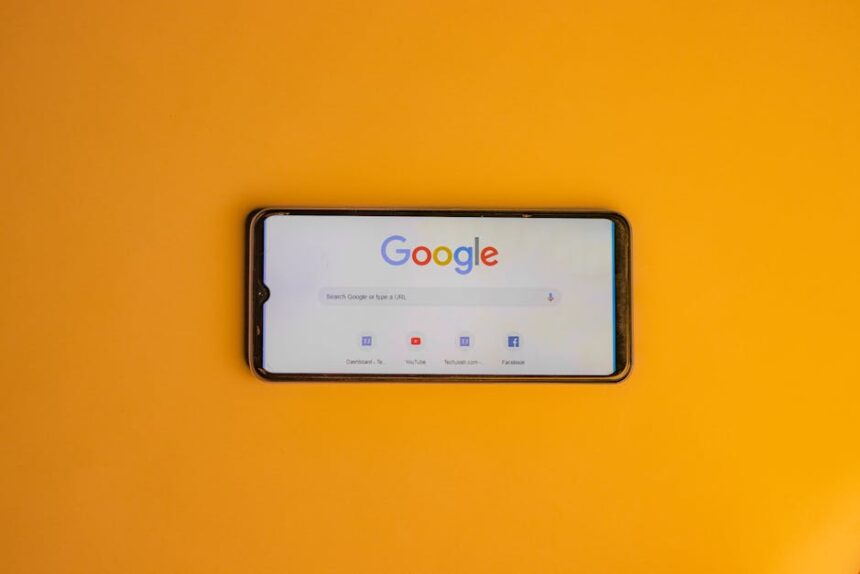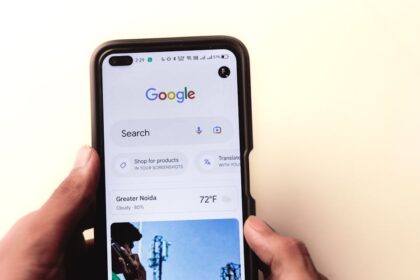Understanding Mobile-First Indexing and Core Web Vitals
The landscape of search engine optimization has undergone a profound transformation with the ubiquitous adoption of mobile devices. Google’s shift to mobile-first indexing fundamentally rewired how websites are crawled, indexed, and ranked. No longer is the desktop version the primary consideration; instead, Google predominantly uses the mobile version of a website’s content for indexing and ranking purposes. This monumental change means that if your mobile site offers a degraded experience, lacks content, or suffers from technical issues, your entire search performance, even for desktop users, will be negatively impacted. A thorough mobile SEO audit, therefore, begins with a deep understanding of this paradigm shift and the crucial metrics that Google now prioritizes, particularly Core Web Vitals.
Mobile-First Indexing is not merely a preference; it’s the standard. For websites created after July 1, 2019, it’s the default. For older sites, Google has progressively migrated them to mobile-first indexing, and by March 2021, all sites were expected to be subject to it. This means the content, design, user experience, internal links, and structured data present on your mobile site are what Googlebot-Smartphone evaluates. If your mobile site has less content than your desktop site, that missing content will not be indexed or considered for rankings. If your desktop site has robust structured data but your mobile version doesn’t, you lose out on rich snippet opportunities. The core takeaway: your mobile site is your website for Google.
Integral to mobile-first indexing are Core Web Vitals (CWV), a set of specific metrics that Google uses to quantify the user experience of a web page. These metrics are part of the broader Page Experience signals, influencing rankings, especially for top stories in mobile search results. Auditing your site for mobile SEO issues must heavily emphasize these three vital signs:
- Largest Contentful Paint (LCP): This metric measures loading performance. It reports the render time of the largest image or text block visible within the viewport. For a good user experience, LCP should occur within 2.5 seconds of when the page first starts loading. On mobile, network conditions and device processing power can vary wildly, making LCP optimization particularly challenging and critical. Slow LCP on mobile often stems from unoptimized images, slow server response times, render-blocking JavaScript or CSS, and resource loading delays. Auditing involves identifying these bottlenecks and implementing targeted optimizations to reduce the time it takes for the main content to become visible to the mobile user.
- First Input Delay (FID): This metric quantifies interactivity. It measures the time from when a user first interacts with a page (e.g., clicks a link, taps a button) to the time when the browser is actually able to respond to that interaction. An FID of 100 milliseconds or less is considered good. Long FID values typically indicate that the browser’s main thread is busy executing JavaScript, preventing it from responding to user input. Mobile devices, with their often less powerful processors compared to desktops, are particularly susceptible to high FID, leading to a sluggish and frustrating user experience. Auditing for FID involves analyzing JavaScript execution times, optimizing third-party script loading, and breaking up long tasks into smaller, asynchronous ones to keep the main thread free.
- Cumulative Layout Shift (CLS): This metric assesses visual stability. It quantifies the unexpected shifting of visual page content. A CLS score of 0.1 or less is considered good. Imagine trying to tap a button on your phone, and suddenly the content above it loads, pushing the button out of reach, causing you to tap something else accidentally. This is layout shift, and it’s particularly jarring on mobile where screen real estate is limited and precise tapping is essential. Common causes of high CLS on mobile include images or videos without dimension attributes, ads, embeds, and iframes that dynamically resize, dynamically injected content, and web fonts causing FOIT/FOUT. Auditing CLS on mobile requires careful attention to how content loads and renders to prevent these disruptive shifts.
Beyond these technical metrics, the overarching importance of Mobile User Experience (UX) cannot be overstated. Google’s algorithms increasingly prioritize user satisfaction. A mobile site that is difficult to navigate, has tiny unreadable text, forces users to pinch and zoom, or is riddled with intrusive pop-ups will not only perform poorly in search but also lead to high bounce rates and low conversion rates. A good mobile UX means intuitive navigation, legible content, appropriately sized touch targets, fast loading times, and a design that adapts seamlessly to various screen sizes and orientations. Your mobile SEO audit must encompass a holistic review of UX, as it directly impacts how users interact with your site and, consequently, how search engines perceive its value.
Technical Mobile SEO Audit
The technical aspects of a mobile SEO audit form the bedrock of successful mobile performance. This segment delves into ensuring your site is crawlable, indexable, and performs optimally on mobile devices, addressing design, speed, and fundamental SEO elements.
Mobile-Friendliness Testing: The absolute first step is to verify if Google even perceives your site as “mobile-friendly.” This is a foundational check.
- Google Mobile-Friendly Test: This is the easiest and most direct tool. Simply enter your URL, and Google will analyze it, reporting whether the page is mobile-friendly and listing any detected loading issues. It provides a screenshot of how Googlebot sees your page on a mobile device, which is invaluable for identifying rendering problems. Pay close attention to resource loading errors, as these can obscure content from Google.
- Google Search Console’s Mobile Usability Report: For a comprehensive site-wide view, Google Search Console (GSC) is indispensable. The “Mobile Usability” report under the “Experience” section flags issues across your entire site. Common issues reported include:
- Text too small to read: Indicates that font sizes are inadequate for mobile screens, forcing users to zoom.
- Clickable elements too close together: Leads to frustrating mistaps, particularly on smaller screens.
- Content wider than screen: Requires horizontal scrolling, a cardinal sin in mobile UX.
- Viewport not set: The browser doesn’t know how to scale the page to fit the device.
- Uses incompatible plugins: Flash is the classic example; ensure no legacy tech hinders mobile access.
Your audit should systematically address every URL flagged in this report, understanding the root cause of each issue.
Responsive Design Implementation: Responsive web design (RWD) is Google’s recommended approach for mobile optimization. It allows a single URL to serve all devices, dynamically adapting the layout and content based on screen size.
- CSS Media Queries: The backbone of responsive design. Ensure your CSS media queries are correctly implemented to adjust layouts, font sizes, image scaling, and element visibility based on viewport width. Validate that your CSS rules are not overly complex or inefficient, which can lead to layout shifts or rendering delays.
- Server-Side Detection (User-Agent Sniffing – Pros/Cons): While RWD serves one URL, some sites might still use server-side detection to serve different HTML based on the user-agent. This is more complex and less recommended by Google but can be seen in dynamic serving scenarios. If employed, ensure correct Vary HTTP headers are used to prevent caching issues. The main con is the increased complexity and potential for misconfigurations that can lead to serving desktop content to mobile users or vice versa.
- Dynamic Serving: This method uses the same URL but delivers different HTML/CSS based on the user agent. It requires proper implementation of the
Vary: User-AgentHTTP header to inform caches that the content varies by user agent. Failure to do so can lead to Googlebot crawling one version (e.g., mobile) and serving the cached desktop version to mobile users, or vice versa, resulting in a poor user experience and indexing issues. - Separate URLs (m.dot sites): Once common, separate mobile URLs (e.g.,
m.example.com) are now generally discouraged by Google. If your site still uses this approach, ensure correct bidirectional annotations usingon the mobile page pointing to the desktop version andon the desktop page pointing to the mobile version. This tells Google the relationship between the two versions and helps consolidate ranking signals. However, the maintenance overhead and potential for misconfiguration are high, making migration to responsive design a strong recommendation.
Page Speed Optimization for Mobile: Mobile users are notoriously impatient. Slow loading times are a critical conversion killer and a major ranking factor.
- Tools:
- PageSpeed Insights: Provides LCP, FID (estimated), CLS scores, and detailed recommendations. It simulates both mobile and desktop environments, offering specific suggestions for improving performance.
- Lighthouse: Built into Chrome DevTools, Lighthouse offers a more granular audit of performance, accessibility, best practices, SEO, and PWA (Progressive Web App) aspects. It provides a detailed breakdown of metrics and actionable advice.
- GTmetrix: Offers Waterfall charts showing loading order, FCP, LCP, TBT, and other metrics, helping pinpoint resource loading bottlenecks.
- Key Metrics for Mobile Speed: Focus on FCP (First Contentful Paint), LCP, TBT (Total Blocking Time – strongly correlated with FID), and Speed Index.
- Image Optimization:
- Compression: Use tools to compress images without significant quality loss.
- Next-gen formats: Serve images in formats like WebP, which offer superior compression compared to JPEG or PNG.
- Lazy Loading: Implement lazy loading for images and iframes that are below the fold. This ensures that resources are only loaded when they enter the viewport, saving bandwidth and speeding up initial page load.
- Responsive Images: Use
srcsetandsizesattributes inelement to serve different image resolutions based on the user’s device and viewport, ensuring the correct size image is loaded, not an unnecessarily large one.
- Minify CSS, JavaScript, HTML: Remove unnecessary characters (whitespace, comments) from code files to reduce their size, speeding up download and parsing.
- Leverage Browser Caching: Set proper cache headers for static resources (CSS, JS, images) so that returning visitors can load pages faster from their local cache.
- Server Response Time: A slow server can negate all other optimizations. Ensure your hosting provider is reliable, your server resources are adequate, and your database queries are optimized.
- AMP (Accelerated Mobile Pages): AMP is an open-source framework designed to create lightning-fast mobile pages. While its prominence has waned slightly with CWV, it can still be beneficial for certain content types, especially news and articles, by providing instant loading experiences. Audit your AMP implementation for validity using the AMP Validator tool and ensure it serves the same content as your canonical mobile page. Be aware of the trade-offs, such as potential loss of control over some JavaScript and styling.
Crawlability and Indexability: Even the fastest, most beautiful mobile site is useless if Google can’t find and understand it.
- Robots.txt for Mobile: Ensure your
robots.txtfile isn’t blocking essential CSS, JavaScript, or image files that Googlebot needs to fully render and understand your mobile pages. Many mobile usability issues stem from accidentally blocking these critical resources. Use GSC’srobots.txttester to verify. - XML Sitemaps: Your XML sitemap should include all your mobile-optimized URLs. If you’re using responsive design (one URL for all devices), your existing sitemap is sufficient. If you use separate mobile URLs (
m.dot), ensure bothm.dotURLs and their canonical desktop counterparts are included, with correct annotations. - Canonical Tags for Mobile Pages: For responsive design, canonical tags typically point to the self-referencing URL. For separate mobile URLs, ensure the mobile page correctly uses
rel="canonical"to point to its desktop counterpart. This helps Google understand the relationship and consolidate ranking signals. - Hreflang for Mobile Content (if multilingual): If you have multilingual content with separate mobile versions for different languages/regions, ensure your
hreflangannotations correctly specify the mobile URLs. - JavaScript SEO Considerations for Mobile: Many modern websites rely heavily on JavaScript for rendering content.
- Rendering: Googlebot can execute JavaScript, but it requires resources and time. Ensure critical content is available in the initial HTML or rendered quickly.
- Hydration: For Single Page Applications (SPAs) and Progressive Web Apps (PWAs), ensure proper hydration of content (client-side JavaScript taking over from server-rendered HTML) to avoid content disappearing or becoming unresponsive.
- Lazy Loading of JS: Only load necessary JavaScript immediately. Defer or asynchronously load non-critical scripts.
- Error Handling: Ensure JavaScript errors don’t prevent content from loading or functionality from working on mobile. Use GSC’s “Coverage” report to check for JavaScript-related errors.
Structured Data for Mobile: Structured data helps Google understand your content better and can lead to rich results in search.
- Mobile-Specific Rich Results: Ensure your structured data (e.g., Schema.org markup for articles, products, local businesses) is correctly implemented on your mobile version. If your mobile content differs from desktop, the structured data on mobile must accurately reflect the mobile content.
- Schema Markup Validation: Use Google’s Rich Results Test tool to validate your structured data and preview how it might appear in search results on mobile devices. Ensure there are no errors or warnings preventing rich snippets from appearing.
Content and On-Page Mobile SEO Audit
Once the technical foundation is solid, the audit shifts to how your content is presented and experienced on mobile devices. This involves not just readability but also how users interact with the content and how it aligns with mobile search intent.
Mobile Content Readability: Content needs to be easily consumed on a smaller screen, often with varying lighting conditions and user environments.
- Font Sizes: Ensure body text is at least 16px (or 1 rem), and heading sizes are proportionally larger but not excessively so. Small fonts strain the eyes and lead to users zooming in, which is poor UX.
- Line Height and Paragraph Spacing: Adequate line height (e.g., 1.5-1.8 times the font size) and paragraph spacing (e.g., 0.5-1 em) improve readability by providing “white space” that prevents text from feeling dense and overwhelming.
- Breaking Up Large Blocks of Text: Long paragraphs are daunting on mobile. Break content into shorter paragraphs (2-4 sentences max). Use bullet points, numbered lists, and blockquotes to make information digestible.
- Use of Headings and Subheadings: Implement a logical heading structure (H1, H2, H3, etc.) to break up content and provide a clear hierarchy. These headings act as signposts, allowing mobile users to quickly scan and find relevant sections without endless scrolling. Ensure they are styled appropriately for mobile, standing out without being overly large.
Mobile User Experience (UX) Elements: Beyond text, the overall interactability of your site on a phone or tablet is paramount.
- Easy Navigation:
- Hamburger Menus: The standard for mobile navigation. Ensure it’s clearly visible, opens smoothly, and contains all essential navigation links. Test its responsiveness across various screen sizes.
- Breadcrumbs: Provide clear breadcrumb navigation, especially for e-commerce or large content sites, to help users understand their location within the site hierarchy.
- Search Functionality: A prominent and easily accessible search bar is crucial for mobile users who want to find specific information quickly.
- Call-to-Action (CTA) Placement and Size: Mobile CTAs need to be easily tappable and strategically placed.
- Size: Buttons should be large enough to be easily tapped (at least 48×48 CSS pixels according to Google’s guidelines, or roughly 9mm), with sufficient padding.
- Placement: Place CTAs above the fold where possible, or strategically throughout the content where they naturally prompt the next step in the user journey. Avoid placing them too close to other interactive elements.
- Form Optimization for Mobile: Filling out forms on mobile can be tedious.
- Input Types: Use appropriate HTML5 input types (e.g.,
type="email",type="tel",type="number") to trigger the correct mobile keyboard. - Labels: Ensure labels are always visible and associated with their input fields.
- Field Size: Make input fields large enough to be easily tapped and to display entered text clearly.
- Validation: Provide immediate, clear feedback on form errors to help users correct mistakes quickly.
- Autofill: Enable autofill where appropriate to reduce typing.
- Input Types: Use appropriate HTML5 input types (e.g.,
- Pop-ups and Interstitials (Google’s Stance): Google penalizes intrusive interstitials that block content on mobile and negatively impact user experience. These include pop-ups that cover the main content, standalone interstitials that require dismissing, and layouts where the above-the-fold portion of the page is similar to an interstitial. Exceptions exist for legal obligations (cookie consent), login dialogues, and small banners that don’t obscure content. Audit your site to remove or redesign any intrusive elements that might trigger this penalty.
- Touch Target Size and Spacing: Reinforce the point about clickable elements. Ensure links, buttons, and other interactive elements have enough padding and clear spacing around them so users don’t accidentally tap the wrong element. Use tools like Lighthouse to identify areas where touch targets are too small or close.
Keyword Research for Mobile: Mobile search behavior differs from desktop. An effective mobile SEO audit must account for these nuances.
- Voice Search Optimization: Mobile devices are primary drivers for voice search.
- Long-tail, Conversational Queries: Voice queries are typically longer and more natural language. Optimize content for natural questions (who, what, when, where, why, how) and conversational phrases.
- Answer Box/Featured Snippets: Optimize content to directly answer common questions, as voice search often pulls answers from these rich results.
- Local SEO for Mobile: Many mobile searches have local intent.
- Google My Business (GMB): Ensure your GMB profile is fully optimized, verified, and consistent with your website’s NAP (Name, Address, Phone Number) information. Encourage reviews.
- Citations: Ensure consistent NAP information across online directories and local citation sites.
- “Near Me” Searches: Create content that naturally incorporates local modifiers and answers local queries.
- Mobile Search Intent Differences: Users on mobile are often on the go, looking for quick answers, directions, or contact information. Desktop users might be doing deeper research. Tailor content for mobile to provide immediate utility. For instance, prominently display phone numbers, maps, and hours of operation.
- Mobile-First Keyword Research Tools: While traditional keyword tools work, consider how queries shift on mobile. Analyze GSC performance reports filtered by device to identify top mobile queries.
Internal Linking and Navigation: Internal links are crucial for spreading link equity and guiding users and crawlers.
- Mobile-Friendly Internal Link Structure: Ensure internal links are easy to tap and clearly distinguishable from regular text. Avoid long strings of text links that are hard to discern on a small screen. Use clear anchor text.
- Footer Navigation Considerations: While less prominent than header navigation, the footer still provides crucial links (privacy policy, contact, sitemap). Ensure it’s concise and readable on mobile without being overly cluttered.
Off-Page and Local Mobile SEO Audit
While much of mobile SEO focuses on the on-site experience, external factors also play a significant role. This includes your backlink profile and, crucially for many businesses, local SEO.
Mobile Backlink Profile: The quality and relevance of sites linking to you remain critical.
- Impact of Mobile-Friendly Sites Linking to You: While not a direct ranking factor for your site’s mobile-friendliness, links from other high-quality, mobile-friendly sites inherently carry more weight and demonstrate relevance within a mobile-centric ecosystem. Google assesses the overall quality of the linking domain, which increasingly includes its mobile experience. If your backlinks primarily come from outdated, non-mobile-friendly sites, this could indirectly signal a less modern or relevant network.
- Disavowing Harmful Links: Just as with desktop SEO, a healthy backlink profile for mobile performance means disavowing spammy or low-quality links that could hurt your authority. Use GSC’s links report to identify potential problematic backlinks.
Local SEO & Google My Business (GMB): For businesses with a physical presence, local SEO is inextricably linked with mobile SEO, as a vast majority of “near me” searches occur on mobile devices.
- Optimizing GMB for Mobile Searches:
- Complete Profile: Ensure your Google My Business profile is 100% complete, including business name, address, phone number (NAP), hours of operation, website link, category, services, and description.
- NAP Consistency: Verify that your NAP information is identical across your GMB profile, your website, and all other online directories. Inconsistencies confuse search engines and users.
- Reviews: Actively encourage customers to leave reviews on your GMB profile. Respond to all reviews, positive and negative, professionally. High-quality reviews boost trust and local rankings.
- Photos and Videos: Upload high-quality photos and videos of your business, products, and services. Mobile users are highly visual and appreciate seeing what to expect.
- Posts and Q&A: Utilize GMB Posts to share updates, offers, and events. Monitor and respond to questions in the Q&A section.
- Service Areas: Clearly define your service areas if you offer services beyond your physical location.
- Local Citations and Directories:
- Accuracy: Audit your listings on major local directories (Yelp, Yellow Pages, industry-specific directories) to ensure NAP consistency and accuracy. Incorrect information can lead to lost customers and diminished local search visibility.
- Quality: Prioritize reputable and relevant directories.
- Location Pages on Your Website: For businesses with multiple locations, create dedicated, mobile-optimized location pages for each. These pages should include:
- Unique content about that specific location.
- Embedded Google Maps.
- Local NAP details, schema markup for local business.
- Reviews specific to that location.
- Directions and parking information.
App Indexing (if applicable): If your business has a mobile app, auditing its discoverability in search is another facet of mobile SEO.
- Deep Linking Mobile Apps: Implement app deep links (Android App Links, iOS Universal Links) so that when a user clicks a link in mobile search results, they are taken directly to the relevant content within your app, rather than your mobile website. This provides a seamless user experience for app users.
- App Store Optimization (ASO) Basics for Discoverability: While not strictly SEO, ASO impacts how users find your app in app stores, which often starts with a mobile search.
- Keyword Optimization: Use relevant keywords in your app title, subtitle, and description.
- Screenshots and Videos: High-quality visuals attract users.
- Reviews and Ratings: Strong ratings and positive reviews boost visibility and trust.
- App Store Listing: Ensure your app store listing is complete and compelling.
Monitoring and Iteration
A mobile SEO audit is not a one-time event but an ongoing process of monitoring, analysis, and refinement. The digital landscape, Google’s algorithms, and user behavior are constantly evolving, requiring continuous adaptation.
Google Search Console (GSC) Reports: GSC is your primary dashboard for understanding how Google interacts with your mobile site.
- Core Web Vitals Report: This is paramount. Regularly check this report for both mobile and desktop. It highlights URLs with “Poor,” “Needs improvement,” and “Good” scores for LCP, FID, and CLS. It provides specific examples of affected URLs, allowing you to prioritize fixes. Pay close attention to mobile scores, as these are the ones Google primarily indexes.
- Mobile Usability Report: Continue to monitor this report under “Experience.” It will flag any new or persistent mobile usability issues identified by Googlebot-Smartphone. A clean report here is a strong indicator of mobile-friendliness.
- Performance Reports (Device Breakdown): Analyze your search performance filtered by device type (desktop, mobile, tablet). Look for discrepancies in impressions, clicks, CTR, and average position between devices. If your mobile performance significantly lags behind desktop, it indicates areas for improvement. Identify which queries and pages are underperforming on mobile.
- Crawl Stats (Mobile Crawler): Under the “Settings” section in GSC, review “Crawl stats.” While not explicitly broken down by mobile vs. desktop crawler, you can infer activity and any crawl errors that might uniquely impact mobile rendering if you suspect issues. For mobile-first indexing, Googlebot-Smartphone is the primary crawler. Ensure its activity is healthy.
- Coverage Report: Identify any
indexabilityissues for your mobile pages (e.g., pages excluded bynoindextag, soft 404s, or server errors that only manifest on certain mobile configurations).
Google Analytics (GA4) for Mobile: While GSC shows how Google sees your site, GA4 reveals how actual users interact with it.
- Mobile Traffic Analysis: Segment your traffic by device category (mobile, desktop, tablet). Understand your mobile audience’s behavior. How much traffic comes from mobile? Is it growing?
- Conversion Rates by Device: Crucially, compare conversion rates across devices. If your mobile conversion rate is significantly lower than desktop, it’s a huge red flag indicating poor mobile UX or a broken conversion funnel. This is where your audit insights translate directly into business impact.
- User Flow on Mobile: Analyze user journeys on mobile. Where do users drop off? Are there specific pages or steps in a process (e.g., checkout) that cause disproportionate abandonment on mobile?
- Bounce Rate for Mobile Users: A high bounce rate specifically for mobile traffic can indicate that users are quickly leaving because the page is slow, difficult to navigate, or not meeting their immediate needs.
Competitor Analysis (Mobile): Learning from your competitors can uncover missed opportunities and best practices.
- Analyzing Competitor Mobile Sites: Use tools like PageSpeed Insights and Lighthouse on your top competitors’ mobile pages.
- How do their Core Web Vitals compare to yours?
- What navigation patterns do they use?
- How do they handle pop-ups or forms on mobile?
- Are their CTAs more prominent or effective?
- Do they have specific mobile-only features or content?
- Identifying Best Practices and Gaps: Note down what competitors do well and identify any gaps in your own mobile strategy. Are they serving WebP images while you’re still on JPEG? Do they have a lightning-fast mobile checkout process?
Regular Auditing Cycle: Mobile SEO is not a “set it and forget it” task.
- Scheduling Audits: Establish a regular schedule for mobile SEO audits. Depending on your site’s size and how frequently content changes, this could be quarterly, semi-annually, or annually. Core Web Vitals should be monitored continuously.
- Prioritizing Fixes: Based on your audit findings, prioritize issues. Focus on the problems with the biggest impact on user experience and search performance. Issues flagged in GSC’s Core Web Vitals and Mobile Usability reports should be top priority. Critical conversion funnel issues on mobile also warrant immediate attention.
- Testing Changes: After implementing fixes, thoroughly test them on various mobile devices and browsers. Use real user testing (even if informal) in addition to synthetic tools. Crucially, monitor GSC to see if your Core Web Vitals and Mobile Usability scores improve over time. A positive trend indicates successful optimization efforts. It can take 28 days for Google to re-evaluate your scores after fixes are implemented and sufficient data is collected.
- Staying Updated: The mobile ecosystem, user expectations, and Google’s algorithms are in constant flux. Stay informed about the latest developments in mobile technology, SEO best practices, and Google’s guidelines. Subscribe to industry newsletters, follow official Google blogs, and participate in SEO communities. This ongoing education will ensure your mobile SEO audit strategy remains cutting-edge and effective.











